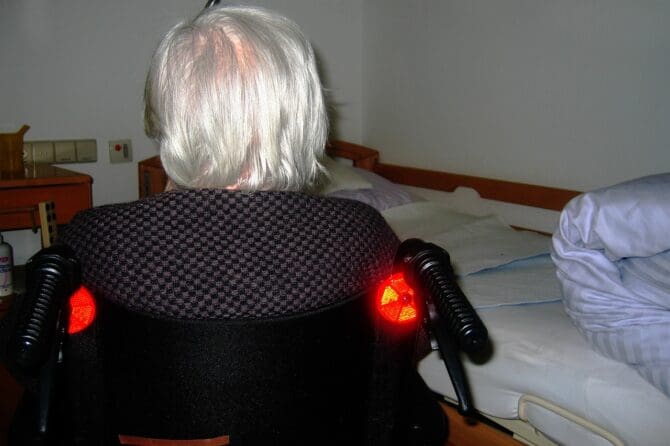For women who love yoga, becoming pregnant can present a unique situation when it comes to continuing their practice.
Just because you’re pregnant doesn’t mean you can’t do yoga. In fact, yoga may help you cope with the changes associated with pregnancy physically, mentally and spiritually.
While pregnancy may present some challenges to a woman’s yoga routine, changes can be made, so she can still reap some of the benefits from the exercise. Pregnant women might not be able to participate in yoga as often as they did before, or do all of the same exercises, but by making a few adjustments they can still enjoy some of the benefits.
According to yoga instructors and medical professionals, practicing yoga can be very beneficial for pregnant women as it helps them to focus on their breathing and relax their mind and body. If you’ve ever participated in a child birthing class, then you probably already know how important breathing exercises can be during the delivery process. Lamaze birthing classes in particular place a big emphasis on proper breathing techniques. Although the breathing exercises in a child birthing class may be more of a forced, deliberate type of breathing (short, quick breaths), the classes also include controlled deep breathing that is intended to calm and relax the body during the delivery. This is extremely similar to the type of breathing exercises performed in a yoga class, and it is incredibly beneficial for both the mother and child.
Yoga breathing exercises can provide many benefits for women who are expecting, from pre-natal care to the labor phase to the actual childbirth. The breathing techniques connected to yoga can help calm the mind and the body, eliminating physical and mental stress which can be harmful during pregnancy.
Pregnant women should be cautious when practicing yoga, as there are different safety measures to take during each trimester. The following are suggestions on how to integrate yoga into your pregnancy, based on which trimester you are in:
First Trimester:
– Avoid any poses that require you to lie flat on your back, as this can reduce blood flow to the uterus.
– Stick to gentle, slow movements.
– Avoid any deep twists or strong forward/backward bends.
Second Trimester:
– As your baby grows, you may need to modify some traditional yoga poses.
– For example, you may need to widen your stance in Warrior II pose, or avoid lying on your stomach in Cobra pose.
– Be sure to listen to your body and avoid any poses that feel uncomfortable.
Third Trimester:
– You may need to modify or skip some poses as your belly grows.
– For example, you may want to avoid lying flat on your back or doing any deep twists.
– Pregnant women should also avoid hot yoga classes during this time.
If you are a woman in your first trimester of pregnancy, it is important to let your yoga instructor know of your condition, so they can help guide you through any necessary modifications to the poses. Additionally, if you are pregnant and experiencing morning sickness, know that it is perfectly okay to pull out of a class or take a less strenuous class on those days. Morning sickness is simply your body’s way of telling you that it’s time to change up your yoga routine a bit.
If you are a pregnant woman who is new to yoga, you can find many classes specifically designed for pregnant women that offer the same health benefits of traditional yoga. Many yoga studios have these classes, which also allow you to consult and share information with other expectant mothers in the class. If you cannot find a prenatal yoga class near you, there are many prenatal yoga videos and DVDs available that can be used in the comfort of your own home.
Yoga instructors recommend specific moves for women in their first trimester, which are designed to promote more flexibility in the hip area and potentially make childbirth easier. Yoga experts recommend that expectant mothers practice poses such as the Triangle, Knee to Ankle, Warrior II, the Pigeon, Ardha Chandrasana and Baddha Konasana. Yoga instructors recommend certain positions, like Cat-Cow, for pregnant women because they help to place the baby in the optimal birthing position inside the body. Similarly, yoga experts discourage pregnant women from performing poses that stretch the muscles, particularly the abdominals, too far, since pregnancy increases the production of the hormone relaxin, which softens connective tissue and allows the uterus to expand.
The second trimester is often when morning sickness passes and can be a great time for expectant mothers who have never tried prenatal yoga to give it a go. However, all pregnant women – regardless of their level of experience with yoga – should be cautious and take it easy during yoga sessions, avoiding any moves that might require them to overexert or stretch themselves too much.
If you’re just starting out with yoga, experts recommend that you step or crawl instead of jumping, jump-throughs, or rolling in your transition between movements. With moves such as the sun salutation, keep the chest no more than 85 degrees from the floor in the forward bend and place the hands in front of the feet rather than along the side. As you become more experienced, you can start to experiment with other moves and transitions. Pregnant women should avoid moves that could cause placental abruption, such as extreme twists, poses that require pressing the heel of the foot into the uterus while in the lotus or half-lotus position. Yoga instructors typically recommend pregnant women to stay loose and not twist the knee to any extreme.
A pregnant woman’s size and level of fatigue definitely become a factor to consider by the third trimester when it comes to participating in yoga. To be safe, all yoga poses that compress the stomach should be avoided. Pregnant women should also be in tune with their general feelings of fatigue and only do what they feel up to. If a pregnant woman isn’t feeling up to doing a full yoga session, gentle stretching and calming breathing exercises will suffice.
At 36 weeks pregnant, it’s best to limit the number of inversion poses like Legs Up Against The Wall, Bridge Pose and Downward Dog. These moves could potentially put the baby in an unfavorable position, as stated by doctors and yoga instructors. The only exception to this rule is if the baby is in a breech position – in which case, these poses might actually help to turn the baby into the correct position.
Yoga experts have a few specific recommendations for pregnant women who want to participate in yoga classes. First, avoid Bikram yoga, also known as “hot yoga.” Studies have shown that overheating can be harmful to your pregnancy. Second, be sure to listen to your body and only do poses that feel comfortable. If something doesn’t feel right, don’t force it. And finally, avoid inversions and anything that puts undue pressure on your belly.
Since the body goes through many changes during the second trimester, it’s important for pregnant women to be extra careful when doing standing poses. To reduce the risk of injury, they should use a chair or wall for support.
When performing a forward bend, it’s important to bend from the hips while keeping the breastbone leading the way. This helps to extend the spine and avoid putting pressure on the abdominal section. If you’re doing a seated forward bend, you can place a yoga strap or towel behind your ankles and hold onto the ends with both hands. As with other moves, remember to bend from the hips and keep the chest elevated. Pregnant women should also keep their legs apart at hip width for additional stomach room.
If you want to do a twist pose, make sure to twist your shoulders and back instead of your waist. And only go to a position that is comfortable. This will help you avoid putting pressure on your stomach muscles.
To reduce the risk of injury, avoid back bends, one-leg balancing, handstands, headstands and upward bow movements.
Last but not least, it’s so important to listen to your body during pregnancy. Pregnancy is an amazing time in a woman’s life and practicing yoga can help make it less stressful, more comfortable and even more peaceful. Pregnancy yoga classes can help you to connect with your baby and feel more comfortable in your own skin as your body changes.











